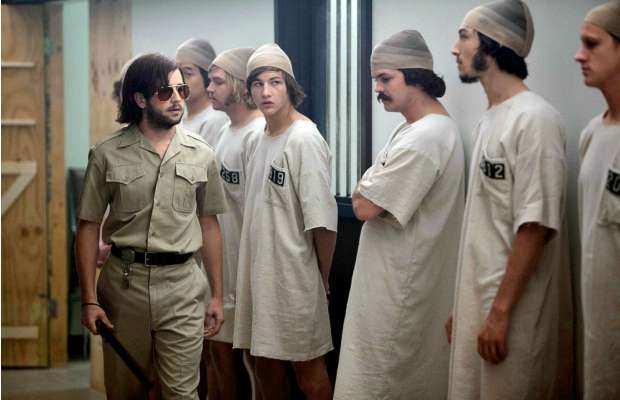Movie Reviews
‘The Stanford Prison Experiment’ Provides Terrifying Look Into the Power of Psychology

The year is 1971 and during the Summer at Stanford Univeristy, Dr. Philip Zimbardo and a team of researchers set about to create and experiment which would reveal a lot about how humans handle power and desparity. 24 male students were selected to participate in the experiment, with half being prisoners and the other half being guards. The experiment would put the young men in a fake prison in the basement of the psychology department and in just one day, things got very out of hand. What happened over the next 6 days was horrifying and also quite revealing.
The Stanford Prison Experiment provides a terrifying look into the psychology of power and how quickly it can corrupt even the most bright and tenderhearted. Delving deep into the minds of the young volunteers and the older experiment runner, this film explores the vast range of emotions and reactions to the set circumstances provided. We watch as certain characters fall into submissive roles because it’s easier, whereas others rebel and attempt to find some form of dominance to keep themselves sane. Much is revealed about human nature, how and why we behave the way we do, and in the end the experiment heeds surprising and unfortunate results.
Ezra Miller, or prisoner 8612, provides the first act with a hyperintense performance which yields certain outcomes which the testers and audiences expected. Miller doens’t think that the experiment will be all that bad, until things become increasinlgy tough for him. His breaking point is reached fairly quikcly, but not beofre he manipulates some of his fellow prisoners to try to rebel with him. The powerless has found some power, but it doesn’t last and we see Miller fall deeper into his own mind, screaming and hitting anything he can find. He and Angarano’s character both epitomize two charcaters stuggling for power, questioning how to keep it, and wondering if they’re in the right. Angarano becomes deeply invested in his John Wayne persona, often taunting and harassing the prisoners and bending them to his will.
In the second and third act, we spend more time with Tye Sheridan (prisoner 819) and Johnny Simmons (prisoner 1037). Sheridan plays a younger stanford student, who’s often uncertain of what’s going on and is afraid of what may come. He and Simmons share a cell and while Simmons is more calm, he begins to lose hope and attempts to barter his way into parole time, essentially giving in to the experiment. They have their own little episodes and each convincgly finds a way to communicate just how wrong the experiment is turning out to be. On the other side of the spectrum, we see the guards power grow and with that growth comes abuse and misuse, as they test the limits of how far they can push their prisoners. It’s a sick game of give-and-take, as the prisoners hopelessness leads them to become violent towards the guards.
At the helm of the experiment is the film’s puppet master, Billy Crudup, who manages to be both completely evil and yet somewhat briliant. He lets things go on for far too long inside the simulated jail, but the results he found were fairly conclusive. Both he and the audience see how people behave differently in certain circumstances and the true horror of the film is revealed as the prisoners begin accepting the horrid fates that the abusive guards have sealed for them. People love to test their limits and find the line that we should never cross and that’s what makes this film so interesting. I’m in no way justifying what happened to these young men, but this experiment is a very telling look into the animal instincts which lay just below our surfaces.
With so many young men (all of whom have appeared in at least one indipendent film as of late) on the screen, it gets hard to follow all of their stories and struggles. There are many guards whom we never spend time with, but I wish we had because many seemed reluctant to treat their fellow students in such a cruel manner. The whole time I wondered what was going on in their heads and the heads of everyone watching the footage from a back room. Some people would voice concerns, but nothing ever really got through to Crudup’s character. We also shift from a few different prisoners perspectives and while each are great on their own, they don’t all add up the way you’d hope for by the end of the film. Something still feels missing from the experiment and we never quite figure out what that variable is.
The Stanford Prison Experiment is necessary viewing in most psychology classes (that is, the original footage from the experiment) and it’s not hard to see why. As tough as it can be to watch sometimes, what this film says about power and desparity is fairly true to circumstances we’re seeing here in America today. With fantastic performances all across the board, The Stanford Prison experiment proves to be one of the better and more interesting films released this year and one that you should certainly seek out!